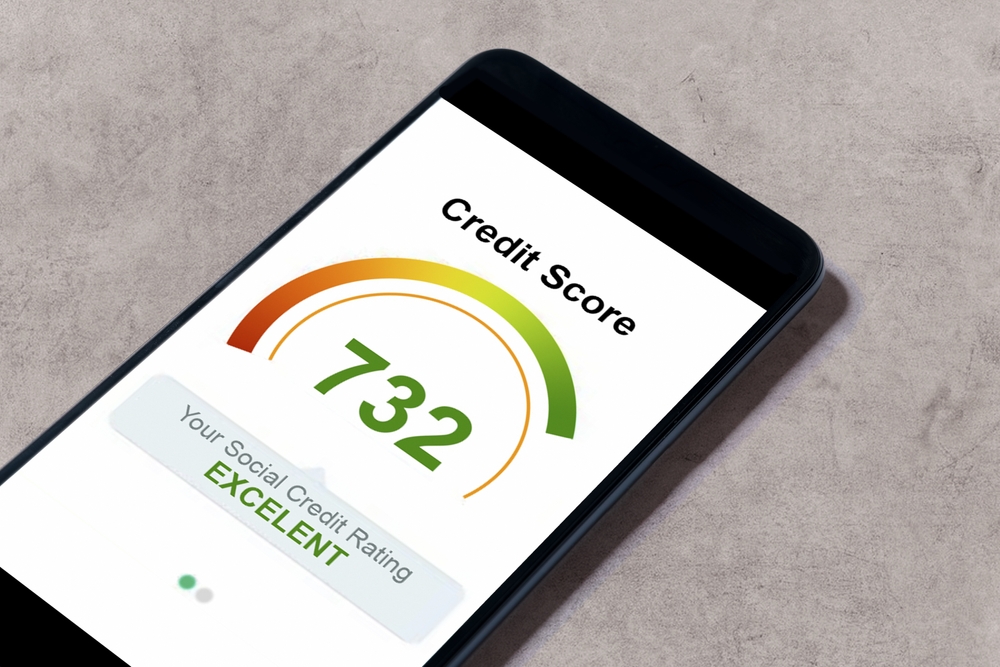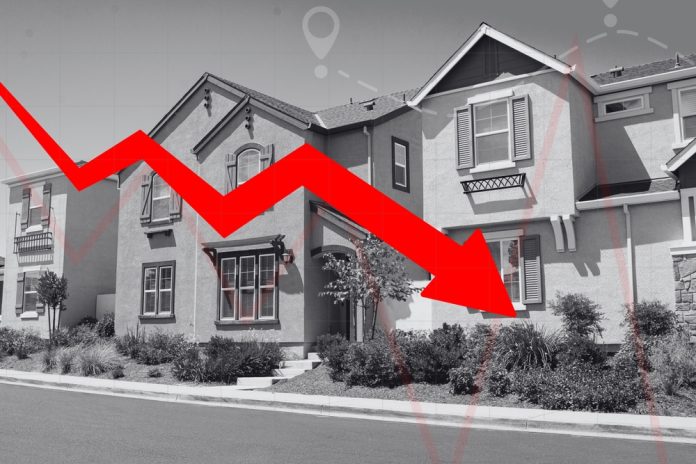It wasn’t so long ago that homebuyers could lock in jaw-droppingly low mortgage rates—some as low as 3%. For those lucky enough to secure such a deal, it felt like winning the housing lottery. These historically low rates made homeownership more accessible, slashing monthly payments and allowing buyers to afford more expensive homes without stretching their budgets too thin. It was a golden opportunity that left many people looking back with a sense of nostalgia—and a bit of regret if they didn’t seize the moment.
Why Did 3% Mortgage Rates Happen?
To understand whether we’ll ever see rates this low again, it helps to look at what created them in the first place. Back in 2020 and 2021, the world was grappling with the unprecedented economic fallout of the COVID-19 pandemic. Businesses across the globe were forced to shut their doors, millions of workers lost their jobs, and entire industries faced crippling disruptions. The uncertainty and fear surrounding the pandemic sent shockwaves through financial markets, with investors flocking to safer assets like government bonds, causing yields to plummet.
In response to this economic chaos, the Federal Reserve took bold and aggressive actions to stabilize the U.S. economy. The Fed slashed interest rates to near zero, making borrowing cheaper across the board. Simultaneously, it launched a massive bond-buying program, purchasing trillions of dollars in Treasury securities and mortgage-backed securities. This effort was designed to inject liquidity into the financial system, keep credit flowing, and support the struggling housing market. These interventions caused bond yields to drop even further, pulling mortgage rates down with them.
At the same time, the federal government implemented large-scale fiscal stimulus measures, such as direct payments to households and expanded unemployment benefits. This gave consumers additional financial support, further fueling demand for housing and mortgages. The combination of economic turmoil, aggressive Federal Reserve policies, and fiscal stimulus created a once-in-a-lifetime set of circumstances that drove mortgage rates to historic lows.
Essentially, these ultra-low mortgage rates weren’t just a product of market forces but a deliberate response to an extraordinary crisis. The alignment of these unique factors is what made 3% (or lower) mortgage rates possible—a “perfect storm” of economic intervention and uncertainty that’s unlikely to be repeated under normal economic conditions.
Why 3% Rates Are Unlikely to Return
Fast forward to today, and the economic landscape looks vastly different. The U.S. economy has rebounded significantly from the turmoil of the pandemic years, with key indicators signaling strength and stability. Gross Domestic Product (GDP) is rising at a healthy pace, reflecting robust economic activity, and the unemployment rate remains near historic lows. These factors highlight an economy that is not only recovering but thriving in many areas. 
However, this environment of growth and stability doesn’t create the conditions necessary for mortgage rates to drop to the historic lows seen during the pandemic. Low mortgage rates are often tied to economic uncertainty, slow growth, or outright recession—none of which are currently in play. Instead, the present economic climate supports higher interest rates as part of a broader effort to manage inflation and prevent the economy from overheating.
The Federal Reserve, for its part, has taken a sharp turn from its pandemic-era policies. During the crisis, it slashed interest rates and flooded markets with liquidity to stimulate borrowing and spending. Today, it has adopted a more restrictive stance, raising the federal funds rate multiple times to combat persistent inflation. These rate hikes ripple through the economy, influencing borrowing costs for everything from credit cards to mortgages.
As long as inflation remains a concern, the Fed is unlikely to pivot back to the ultra-loose monetary policies of 2020 and 2021. The current trajectory is one of careful moderation—keeping interest rates elevated enough to tame inflation without stalling economic growth. This balancing act means that rates below 3% are highly improbable in the foreseeable future.
Most experts agree that the conditions that led to those ultra-low mortgage rates were extraordinary and tied to a once-in-a-generation crisis. Without a similarly severe economic shock, it’s unlikely that we’ll see those rates return. Instead, borrowers should expect a more normalized interest rate environment, with gradual shifts reflecting broader economic trends rather than extreme, crisis-driven measures
Where Are Mortgage Rates Likely Headed?
The good news? While 3% rates are off the table for now, economists are optimistic that mortgage rates may gradually decline over the next few years. Current forecasts from reputable sources like the Mortgage Bankers Association, Fannie Mae, and Wells Fargo suggest that by late 2025, rates could fall into the 5.50% range. While not the jaw-dropping lows of the pandemic era, this projected decrease still offers some relief for prospective homebuyers.
Even a modest drop in interest rates can have a significant impact on your monthly budget. For example, let’s look at the numbers: On a $500,000 home with a 20% down payment, a rate reduction from 6.40% to 5.55% would lower the monthly mortgage payment from approximately $2,502 to $2,284—a savings of about $218 per month. Over the course of a year, that’s roughly $2,620 in savings, and over the lifetime of a 30-year loan, it could amount to tens of thousands of dollars. This kind of reduction could make homeownership more accessible for buyers who are feeling priced out in today’s high-rate environment.
While these savings may not rival the golden era of 3% rates, they are still meaningful. Lower monthly payments free up cash flow that can be allocated toward other priorities, such as paying down debt, saving for retirement, or investing in home improvements. Even a seemingly small rate adjustment can make a substantial difference over time, especially when combined with smart financial planning.
As you wait for rates to potentially decrease, it’s worth preparing for the opportunity by getting your finances in order. Improving your credit score, saving for a larger down payment, and shopping around for the best mortgage terms can all help you take full advantage of future rate reductions. Remember, even in a higher-rate environment, finding the right loan with competitive terms can make homeownership more affordable and set you on a solid financial path.
What This Means for Home Buyers
If you’re in the market for a home, the key takeaway is that mortgage rates may trend downward in the coming years, but they are unlikely to return to the record-breaking lows seen during the pandemic. Instead of waiting for a return to 3% rates—which is highly improbable—it’s more practical to focus on what you can control to secure the best possible deal in the current environment. Here are some actionable steps to help you navigate the market and maximize your savings:
1. Shop Around
Not all lenders are created equal, and the rates they offer can vary significantly. Even a seemingly small difference, such as 0.25%, can lead to substantial savings over the life of a loan. For instance, on a $500,000 mortgage, a 0.25% lower rate could save you thousands of dollars in interest payments. Take the time to compare multiple lenders, including banks, credit unions, and online mortgage companies. Don’t hesitate to ask for quotes and negotiate terms—you may be surprised at what some lenders are willing to offer to earn your business.
2. Boost Your Credit Score
Your credit score is one of the most critical factors that lenders consider when determining your interest rate. A higher credit score often translates to lower rates, as it signals to lenders that you’re a reliable borrower. To improve your score:
- Pay Down Debt: Lower your credit utilization by paying off credit card balances and other debts.
- Avoid Late Payments: Consistently pay bills on time, as late payments can negatively impact your score.
- Limit New Credit Inquiries: Avoid applying for new lines of credit before securing your mortgage. A better credit score can open the door to more favorable loan terms, potentially saving you thousands over the life of your mortgage.

3. Explore Incentives
Many lenders offer programs or perks to make homeownership more affordable. These might include:
- Closing Cost Assistance: Some lenders help cover a portion of your closing costs, reducing your upfront expenses.
- Down Payment Assistance Programs: These are particularly beneficial for first-time homebuyers who may not have substantial savings.
- Temporary Rate Buydowns: This option allows you to pay a fee upfront to lower your interest rate for the first few years of the loan, easing the initial financial burden. Be sure to ask potential lenders about these programs, as they can make a significant difference in the overall cost of your loan.
4. Stay Financially Prepared
In addition to the above strategies, maintain a strong financial foundation by saving for a larger down payment. A bigger down payment not only reduces the loan amount but may also help you qualify for better rates and avoid costly private mortgage insurance (PMI).
By focusing on these factors, you can position yourself to take advantage of the best rates and terms available, regardless of broader market trends. Remember, while you can’t control the overall interest rate environment, you can control how well-prepared and informed you are when making one of the most significant financial decisions of your life.
Final Thoughts
While the dream of 3% mortgage rates may now be a thing of the past, the outlook for gradually declining rates offers a glimmer of hope for prospective homebuyers. Though rates are unlikely to return to pandemic-era lows, even a modest reduction can make a significant difference in affordability. The key for buyers is to remain informed about market trends and take proactive steps to position themselves for the best possible deal, regardless of where rates settle.
Understanding the market is essential. Mortgage rates fluctuate based on economic factors such as inflation, Federal Reserve policy, and overall economic growth. By keeping an eye on these trends, you can time your decision to take advantage of potential rate decreases. Monitoring reputable sources like Freddie Mac, Fannie Mae, and the Mortgage Bankers Association can provide valuable insights into where rates may be headed.
Beyond staying informed, preparation is critical. Whether rates remain at 6.5% or drop to 5.5%, smart financial planning can ensure you’re ready to act when the time is right. This means:
- Strengthening Your Credit Profile: A higher credit score not only improves your chances of loan approval but also helps you secure lower interest rates. Pay down debts, avoid late payments, and limit new credit inquiries in the months leading up to your mortgage application.
- Saving for a Larger Down Payment: A substantial down payment reduces the amount you need to borrow, potentially qualifying you for better terms and saving you thousands over the life of your loan.
- Shopping for the Right Lender: Different lenders offer different rates, and a small variation can have a big impact on your budget. Don’t settle for the first offer—compare multiple lenders to find the best fit for your needs.
Finally, remember that homeownership is about more than just the interest rate. While lower rates make borrowing more affordable, focusing on the overall financial picture—such as finding a home within your budget and securing a loan with favorable terms—can set you up for long-term success. Even in a higher-rate environment, preparation and smart choices can turn your home-buying dream into reality. By staying proactive and informed, you’ll be ready to seize opportunities and make a confident move toward homeownership, regardless of the market conditions.



